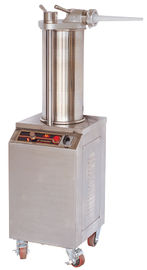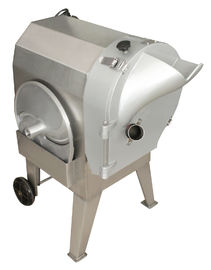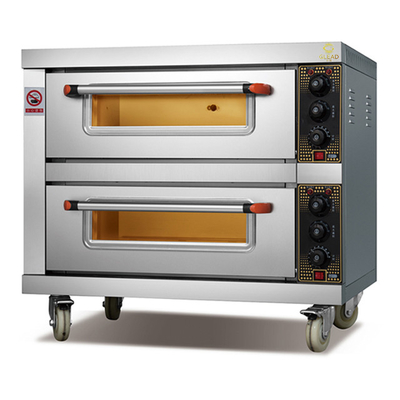thermometer samsung microwave 3 deck 6 trays garlic powder outdoor propane 500 degree electric gas baking oven
   product name product name |
deck oven |
| material |
stainless steel |
| power source |
eletric / gas |
| voltage |
380v/220v/110v |
| tempareture |
0-400°C |
Using a deck oven requires proper setup, preheating, and baking techniques. Here is a step-by-step guide on how to use a deck oven effectively:
1. Setup:
a. Ensure the oven is clean and free from any debris or residue.
b. Make sure the oven is properly connected to the appropriate power source or fuel supply.
c. Position the baking trays or pizza stones on the decks as needed.
d. If the oven has a steam injection system, fill the water reservoir and ensure it is functioning correctly.
2. Preheating:
a. Turn on the oven and set the desired temperature for each deck. Follow the manufacturer's instructions for preheating times.
b. Allow the oven to preheat fully before loading any baked goods. This ensures that the decks are evenly heated.
3. Loading the oven:
a. Prepare your dough or batter according to your recipe.
b. Transfer the baked goods onto the baking trays or pizza stones, leaving enough space between each item.
c. If using a steam injection system, activate it just before loading the goods to create moisture in the oven.
4. Baking:
a. Carefully place the loaded trays or stones into the preheated oven decks.
b. Close the oven door to retain heat and maintain the baking temperature.
c. Monitor the baking process through the oven window or by opening the door briefly when needed. Avoid opening the door too often, as it can affect the oven's temperature and baking consistency.
d. Utilize the separate temperature controls for top and bottom elements or adjust the heat distribution as needed during baking.
e. If your recipe requires steam, you can manually inject steam into the oven by using a spray bottle or misting the goods before placing them in the oven.
5. Baking time and adjustments:
a. Follow the recommended baking time for your recipe, but keep an eye on the goods to prevent over or under-baking.
b. If necessary, rotate the trays or stones within the oven to ensure even baking.
c. Adjust the temperature or heat distribution if certain items require different baking conditions.
6. Cooling and removing baked goods:
a. Once the goods are fully baked, remove them from the oven and place them on cooling racks or other suitable surfaces.
b. Allow the baked goods to cool completely before serving or further processing.
Remember to always refer to the specific instructions provided by the manufacturer for your deck oven model, as there might be additional features or considerations that are unique to your oven.




Deck ovens offer several advantages that make them popular choices in professional baking environments:
1. Even Heat Distribution: Deck ovens are known for their ability to distribute heat evenly across the baking surface. The stone or ceramic decks retain and radiate heat, ensuring consistent baking results throughout the oven.
2. Versatility: Deck ovens are versatile and can handle a wide range of baked goods. Whether you're baking bread, pastries, cookies, cakes, or pizzas, a deck oven can provide the right baking environment and temperature control.
3. Crispy Crusts: The stone or ceramic decks in deck ovens help create crispy crusts on bread and pizzas. The heat absorption and retention qualities of these surfaces result in a desirable texture and flavor.
4. Customizable Temperature Zones: Many deck ovens come with separate temperature controls for each deck or even different zones within a deck. This feature allows bakers to adjust the temperature based on the specific requirements of different recipes or baking goods.
5. Steam Injection: Deck ovens often come equipped with a steam injection system. Steam helps create a moist baking environment, which is crucial for achieving a crispy crust on bread, proper rising, and preventing premature drying or hardening of the outer layers.
6. Energy Efficiency: Many modern deck ovens are designed to be energy-efficient. They feature insulation and heat retention properties that reduce heat loss, resulting in faster preheating times and lower energy consumption.
7. Durability and Reliability: Deck ovens are typically constructed with durable materials such as stainless steel and high-quality stone or ceramic decks. This ensures their longevity and ability to withstand continuous use in busy baking operations.
8. Visual Appeal: Some deck ovens have a glass window in the front, allowing bakers to observe the baking process without opening the oven door. This encourages proper monitoring and minimizes heat loss.
9. Multiple Decks: Deck ovens often come with multiple decks, allowing for simultaneous baking of different products. Each deck operates independently, offering flexibility and increased productivity.
10. Professional Quality: Deck ovens are commonly used in professional bakeries and pizzerias, where high-quality results are essential. Using a deck oven can help achieve professional-level baking with consistent outcomes.
These advantages make deck ovens a preferred choice in commercial baking settings, where precision, efficiency, and quality are paramount.

 Your message must be between 20-3,000 characters!
Your message must be between 20-3,000 characters! Please check your E-mail!
Please check your E-mail!  Your message must be between 20-3,000 characters!
Your message must be between 20-3,000 characters! Please check your E-mail!
Please check your E-mail! 

















